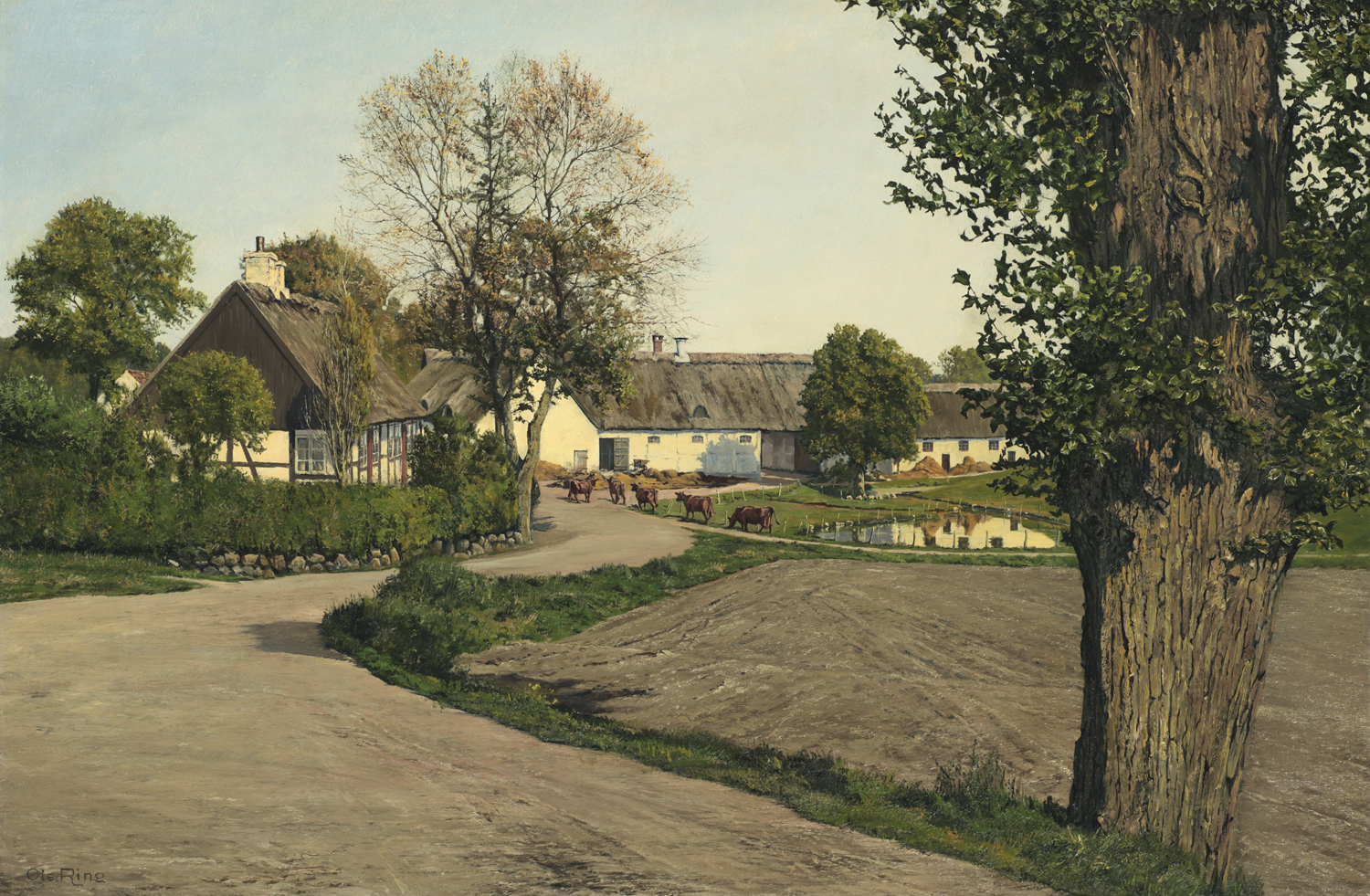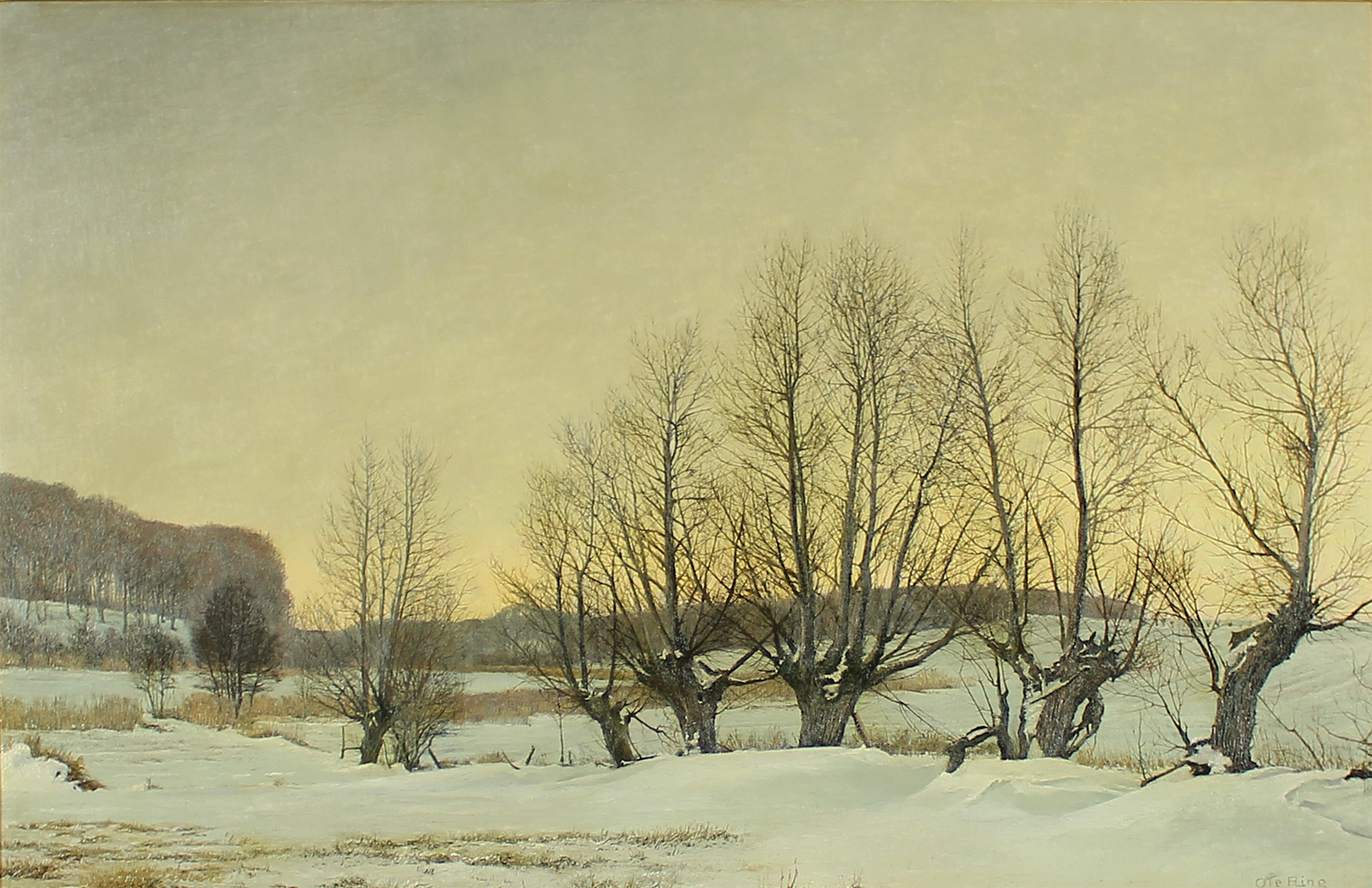SELECT SOLD
Ole Ring was born in 1902 in Baldersbrønde, a town just east of the Roskilde in Denmark. He was the youngest of three children born to the artists Laurits Andersen Ring and Sigrid Kähler. His father, L.A. Ring, was one of the foremost Danish painters of the late 19th and early 20th century. L.A. Ring was a pioneer in symbolism and social realism and his painting “Summer Day by Roskilde Flord” was included in the 2006 Danish Culture Canon. Ole Ring’s mother was a painter and ceramist and a muse to his father, although she was not as well recognized for her art as she spent the majority of her time raising their family.
Ole Ring was taught to paint by his father in the traditional Golden Age of Danish painting techniques and he never ventured away from this highly technical, precise style. Ole primarily painted Danish landscapes close to his homes. At different times of his life these included the cities and towns of Roskilde, Køge, Præstø, Ringsted and Copenhagen. He was a realist and his choice of subject, composition and level of detail shows the influence of his father. He favoured painting subjects in the fall and winter months and these paintings, which typically have a grey/silver hue, pick up the light of the winter and have an ethereal stillness to them. In his early 30’s he lived for five years in Copenhagen and painted a series of city views, amongst others Nyhavn, the Fishermarket/Gammel Strand and Christianshavn. This was a departure from his more rural subjects, but they show the same feeling of stillness as his other paintings as they often have few or no figures and suggested the calm of early morning or twilight. Ole Ring’s village paintings, as well as his elegant and sparsely populated Copenhagen scenes, are careful portraits of a distinctive Danish stillness, capturing the changing seasons, quality of light and atmosphere with pristine detail.
Ole Ring chose to avoid taking part in public official or independent exhibitions. He began to show with the Copenhagen dealer Kleis early in his career and had a strong collector base through this relationship. Unlike many of his contemporaries, Ring maintained the ideals of the Danish Golden age of painting and sustained realism in his landscapes, avoiding the surrealism, modernism and expressionism that had become more popular at the time.
Ole Ring died in 1972 and was buried in Klosterkirkegården in Køge on the coast to the southwest of Copenhagen.










